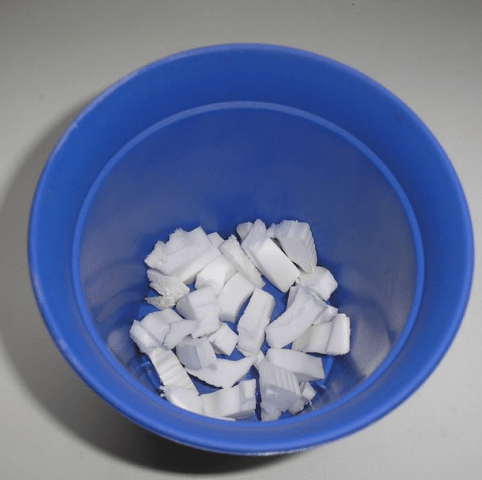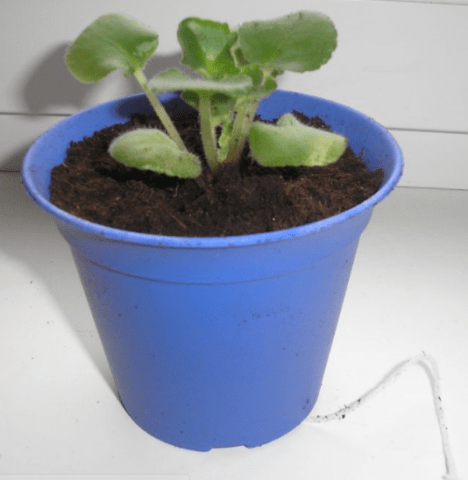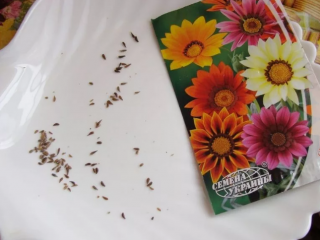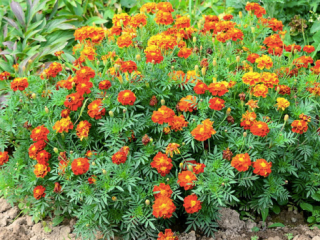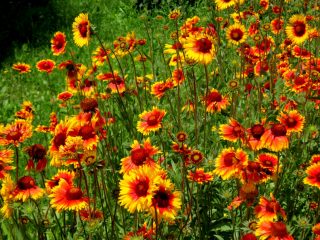Content
Watering petunia seedlings is carried out 2-3 times a week for young seedlings and 1-2 times for adult plants. It all depends on the temperature, light level, and humidity indoors or outdoors. It is necessary to periodically inspect the soil - if it is too dry, increase watering; if it is wet, do not give water at all.
What water to water
Seedlings grown from petunia seeds should be watered only with settled water. The liquid is first poured into a container and allowed to stand for at least 12 hours (preferably a day) at room temperature. If possible, it is also recommended to filter it. This is necessary to remove impurities, including gaseous ones. You can use a regular household filter.
Melt or rain water is best suited for irrigation. It is not hard, contains additional minerals, and is therefore especially useful for young seedlings. It is enough to stand for several hours so that the liquid warms up to room temperature.
If you don’t have time to wait long, you can pour regular tap water and add a small amount of hot liquid to it. As a result, it should acquire a temperature no higher than +25 °C.
But it is better not to practice this method of watering petunia seedlings regularly. Liquid without preliminary settling contains quite a lot of chlorine, which can damage young roots.
How often should you water petunia seedlings on the window?
The root system of all petunia varieties is located in the surface layer of soil. This makes it possible to quickly absorb water after watering. But at the same time, the soil dries out quite quickly. Therefore, petunia shoots and seedlings need to be watered regularly.
The frequency depends on several factors:
- stage of plant development (young seedlings are given water more often, and adults less often);
- temperature and humidity in the room;
- illumination level.
As a rule, petunia should be watered before germination and in the first 14 days after germination three times a week. Initially, it is necessary to create greenhouse conditions - cover the seedling containers with a film with a hole or transparent glass. It is removed periodically for ventilation. Water is given from a syringe (without a needle) or from a spray bottle.

Young seedlings are watered every 2-3 days
Grown petunia seedlings are also given watering three times a week, with the volume being slightly increased. After the seedlings grow, water can be given twice a week. In this case, the day before transplanting into the ground, it is necessary to water the seedlings abundantly so that an earthen ball is formed. Thanks to this, the roots will practically not “notice” the transplant, and the plants will easily take root in the new conditions.
Otherwise, petunia seedlings may suffer from blackleg, rot and other dangerous diseases.
How to properly water petunia seedlings at home
Features of watering seedlings largely depend on the stage of its development. If young seedlings require very little moisture, but it must be given regularly, then grown seedlings need large volumes. In this case, you can give water only twice a week, making sure that the soil remains slightly moist at all times.
How to water petunia after sowing
Seeds require very little moisture before germination. First, fertile soil is placed in the seedling boxes (for example, a mixture of turf soil with peat, humus and sand 2:1:1:1), then moistened with a sprayer.
Place small seeds on the surface, cover with film and place in a warm place. This moisture is enough for 1-2 days. Next, the glass or film is constantly removed for ventilation. If the soil begins to dry out, water it with a spray bottle.
Watering petunia seedlings after germination
When the shoots appear, they are also given water from a sprayer. You can also use a syringe without a needle, which is used to direct a fine line of settled liquid. Watering frequency is three times a week. If the room is humid and warm enough and the soil does not dry out, the seedlings can be moistened 1-2 times. At the same time, do not pour water abundantly - it is better to dispense small volumes, but steadily. Then the soil will be moistened evenly, and the plants will quickly gain green mass.

The emerging entrances are moistened with a sprayer.
Since the root system is located in the surface layer of the earth, water is directed directly under the root.To do this, you can use either a syringe or a syringe. Another option is to purchase a special small watering can equipped with a narrow spout. It is best to moisturize in the morning.
Watering petunias after picking
Picking of seedlings is carried out after the appearance of two true leaves. They are placed in plastic cups or peat pots. First, the seedlings are watered abundantly so that an earthen ball is formed. Since there is a lot of water, there is no need to moisturize in the first days after picking.
At this point, the seedlings are shaded for 3-4 days to reduce moisture evaporation. After the soil dries, watering is done 2-3 times a week. You don't have to use a syringe or spray. To moisten, use a watering can with a narrow spout or pour water from a glass in a weak stream directly under the root. It is important not to get it on the leaves so that the plants do not get sunburn.
Watering petunias in pots and flowerpots
Often, summer residents transplant seedlings into flower pots rather than into open ground. In this form, flowers are used for landscaping balconies, terraces, and window sills. The containers are usually small, and the soil does not have time to dry out quickly. Therefore, petunia should be watered in pots 1-2 times a week.
If the weather is hot outside, the soil dries out quite quickly. To prevent this, water can be given in small volumes every other day. This watering option is suitable for growing outdoors on the sunny side of a veranda or balcony.
Determining the need for additional watering is quite simple. If the foliage of seedlings or adult plants begins to turn yellow, then dries and falls off, you need to check the soil by probing the surface layer. If it is dry, immediately water it in sufficient quantities.

Due to insufficient moisture, the leaves turn yellow and wither.
You should not delay watering, since many petunias do not tolerate drought well - they will survive, but the flowering will be weak. In addition, due to insufficient watering, immunity decreases. Flowers can suffer from powdery mildew, whiteflies and other pests.
Wick watering
Both adult plants and seedlings need regular moisture. In practice, this is not always possible, since there is no time, and the water must be settled. Therefore, to make the task easier, you can wick water the petunias.
The essence of the method is that the pot is placed in a container of water, from which comes a wick made of nylon (can be cut from tights, stretched well). Due to the force of surface tension, moisture is absorbed into the material and enters the soil. Moreover, the liquid saturates it evenly, so there is no need to regularly give water.
To make wick watering of petunia seedlings, proceed as follows:
- Take a pot or other container and lay a drainage layer, for example, fragments of polystyrene foam.
- Lay out an incomplete turn of the wick for watering, its end is taken out through the drainage hole at the bottom of the pot for petunia seedlings.
- The soil is filled in and an adult plant or seedling is planted after picking.
- The free tip of the wick is dipped into a previously prepared container of water for irrigation. It is necessary to immerse the cord so that it touches the bottom.
- Then the soil is moistened abundantly. Next, watering the petunia seedlings will no longer be necessary. It is only necessary to periodically add settled water into the glass under the pot, and also rinse its walls.
What to water for good growth
In order for petunia seedlings to grow well, they should be given liquid fertilizer along with watering.Special complex formulations are used as fertilizers, for example:
- "Fertika Kristalon";
- "Kemira Lux";
- "Ideal";
- "Baikal";
- "Bona Forte";
- nitrophoska.
Folk remedies are also used for watering:
- wood ash (a tablespoon per 1 liter of water);
- banana peel (3-4 pieces per 3 liters);
- dry yeast (10 g per 1 l).
Common mistakes
Watering seedlings and adult petunias is planned depending on the condition of the soil and the stage of plant development. In general, this is a fairly simple procedure, but it also has its nuances. Therefore, when planning watering, you should take into account common mistakes that both beginners and experienced gardeners often make:
- If flowers are grown on a balcony or window, take into account its location. When facing north and west, watering does not need to be done too often. And if the balcony is located in the south or east, water is given at least twice a week.
- If adult flowers or seedlings spend the night outside (for example, in May before transplanting), watering is completely abandoned. At night, the temperature drops significantly, and because of this, combined with strong moisture, the root system will suffer. This is one of the common mistakes of novice gardeners.
- Petunia in a pot is watered twice a day - in the morning, when the sun is still not so hot, and in the evening, when the heat gradually subsides. You should not do this during the day - the moisture will quickly evaporate, the earth will dry out and may crack. In addition, there is a risk of getting on leaves, flowers and shoots, which will get burned in direct sunlight.
Conclusion
Watering petunia seedlings at home is quite simple to organize. Young seedlings are moistened with a sprayer, and until seedlings emerge, they are grown under glass or film.Adult plants are given water 1-2 times a week, depending on weather conditions and soil conditions. The video shows how to water petunia seedlings.
